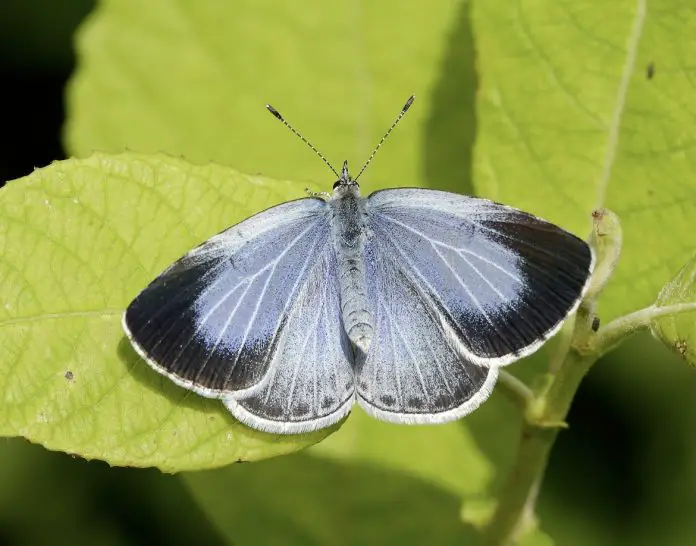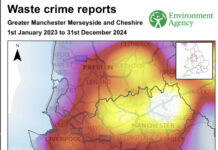Butterfly Conservation is today calling on people across the UK to take part in this year’s Big Butterfly Count (12 July – 4 August) and help scientists understand how climate change is moving butterflies.
After analysing 50 years of data, researchers have discovered a clear northward spread for many species, including common garden favourites the Peacock, Comma and Holly Blue, the result of climate change creating warmer habitats for them to survive in.
 Another species on the move is the Jersey Tiger. Previously found only in south-west England, the striking day-flying moth has in recent years been spotted as far north as central London, gaining its spot in the Big Butterfly Count in 2021.
Another species on the move is the Jersey Tiger. Previously found only in south-west England, the striking day-flying moth has in recent years been spotted as far north as central London, gaining its spot in the Big Butterfly Count in 2021.
And at the other end of the scale, species such as the Scotch Argus in Scotland are retreating northwards to stay in the cooler climes this butterfly prefers.
Butterflies are indicators of the health of our natural environment – and with half of Britain’s butterfly species already threatened or near threatened with extinction, it’s never been more important to understand how these species are responding to the changing climate and to take action to protect them.
To help scientists discover more about the movement and trends of where butterflies are living, the public are being asked to spend 15 minutes in any sunny spot and record the number and type of butterflies they see this summer.
Dr Zoë Randle, Senior Surveys Officer at Butterfly Conservation explains: “Thirty years ago you wouldn’t have seen a Holly Blue in Scotland, now it has expanded where it lives across the UK by 34%, increasingly spreading northward. And the Red Admiral, which was once a migratory species most commonly seen in southern England in the summer and then leaving for Europe in the winter, is now living in the UK all year round, resulting in a three-fold increase in their numbers.
“We’re also seeing other species which have previously suffered severe declines, such as the Comma, recovering, with a huge increase of 94% in where it is found. These highly adaptable species are all able to move into new places as the climate warms, but for habitat specific species, these trends raise serious red flags.
“Species that rely on particular habitats aren’t able to move as freely as our garden favourites. This means that if climate change continues, they could become trapped in isolated fragments of remaining habitat, unable to move and with their food plants at risk from adverse weather conditions, facing the very real threat of extinction.”
Butterfly Conservation Vice President, Chris Packham, who today launches this year’s Big Butterfly Count, explains: “Butterflies are on the move, and there’s no doubt that climate breakdown is behind these geographic shifts.
“We know nature is running out of time, so we need to act now. We need you to get out for the Big Butterfly Count, let us know what you spot and where you spot it. You will be gathering the important data we need to see what the latest impacts are on our butterflies and moths, so that we can take the action needed to protect them.”
This year’s Big Butterfly Count runs from Friday 12 July – Sunday 4 August. For more information and to take part simply visit www.bigbutterflycount.org or download the free Big Butterfly Count app.







